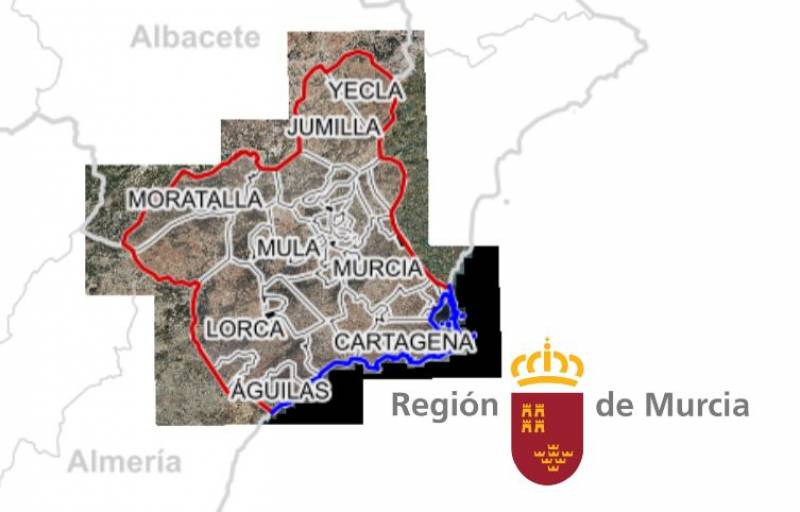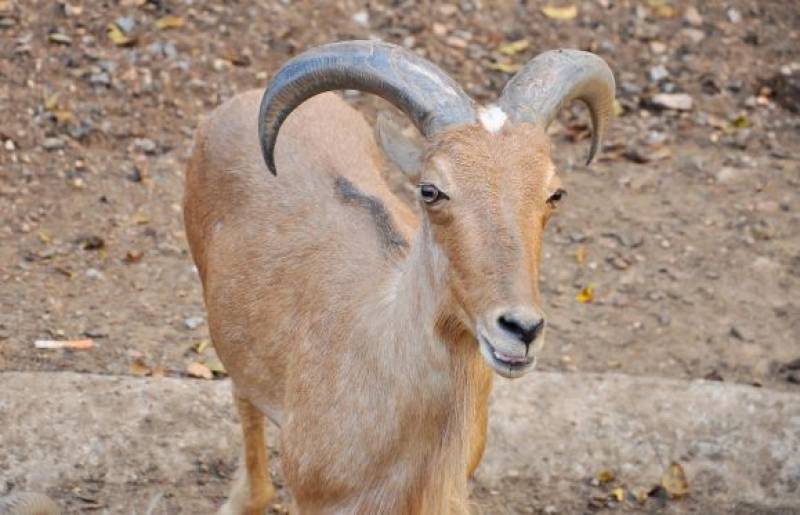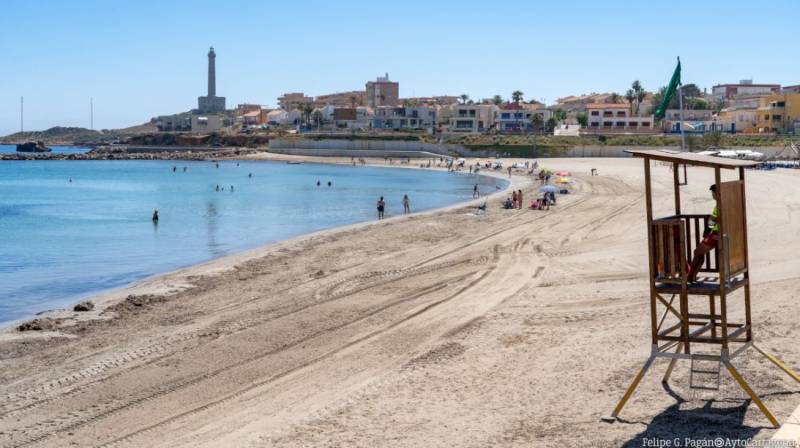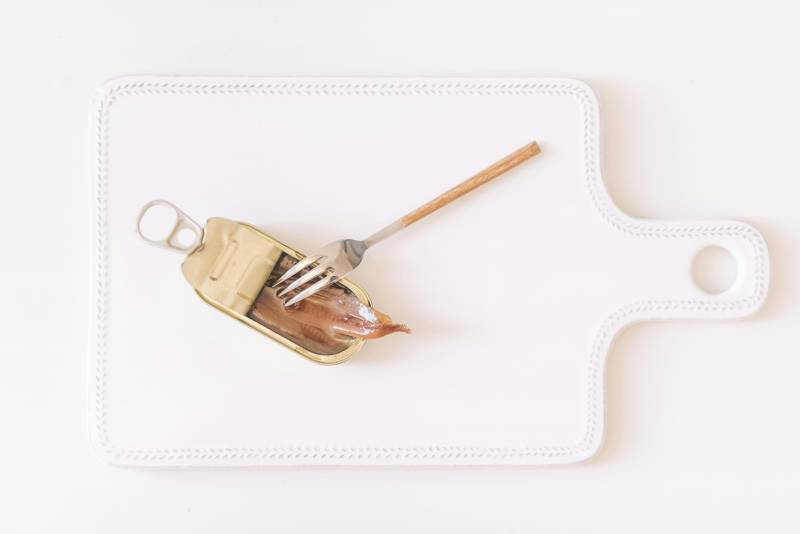- Region
- Águilas
- Alhama de Murcia
- Jumilla
- Lorca
- Los Alcázares
- Mazarrón
- San Javier
-
ALL AREAS & TOWNS
- AREAS
- SOUTH WEST
- MAR MENOR
- MURCIA CITY & CENTRAL
- NORTH & NORTH WEST
- TOWNS
- Abanilla
- Abarán
- Aguilas
- Alamillo
- Alcantarilla
- Aledo
- Alhama de Murcia
- Archena
- Balsicas
- Blanca
- Bolnuevo
- Bullas
- Cañadas del Romero
- Cabo de Palos
- Calasparra
- Camping Bolnuevo
- Campo De Ricote
- Camposol
- Canada De La Lena
- Caravaca de la Cruz
- Cartagena
- Cehegin
- Ceuti
- Cieza
- Condado de Alhama
- Corvera
- Costa Cálida
- Cuevas De Almanzora
- Cuevas de Reyllo
- El Carmoli
- El Mojon
- El Molino (Puerto Lumbreras)
- El Pareton / Cantareros
- El Raso
- El Valle Golf Resort
- Fortuna
- Fuente Alamo
- Hacienda del Alamo Golf Resort
- Hacienda Riquelme Golf Resort
- Isla Plana
- Islas Menores & Mar de Cristal
- Jumilla
- La Azohia
- La Charca
- La Manga Club
- La Manga del Mar Menor
- La Pinilla
- La Puebla
- La Torre
- La Torre Golf Resort
- La Unión
- Las Palas
- Las Ramblas
- Las Ramblas Golf
- Las Torres de Cotillas
- Leiva
- Librilla
- Lo Pagan
- Lo Santiago
- Lorca
- Lorquí
- Los Alcázares
- Los Balcones
- Los Belones
- Los Canovas
- Los Nietos
- Los Perez (Tallante)
- Los Urrutias
- Los Ventorrillos
- Mar De Cristal
- Mar Menor
- Mar Menor Golf Resort
- Mazarrón
- Mazarrón Country Club
- Molina de Segura
- Moratalla
- Mula
- Murcia City
- Murcia Property
- Pareton
- Peraleja Golf Resort
- Perin
- Pilar de la Horadada
- Pinar de Campoverde
- Pinoso
- Playa Honda
- Playa Honda / Playa Paraíso
- Pliego
- Portmán
- Pozo Estrecho
- Puerto de Mazarrón
- Puerto Lumbreras
- Puntas De Calnegre
- Region of Murcia
- Ricote
- Roda Golf Resort
- Roldan
- Roldan and Lo Ferro
- San Javier
- San Pedro del Pinatar
- Santiago de la Ribera
- Sierra Espuña
- Sucina
- Tallante
- Terrazas de la Torre Golf Resort
- Torre Pacheco
- Totana
- What's On Weekly Bulletin
- Yecla


- EDITIONS:
 Spanish News Today
Spanish News Today
 Alicante Today
Alicante Today
 Andalucia Today
Andalucia Today
Date Published: 10/04/2025
Amazingly well-preserved mammoth rib discovered in Cartagena cave
The extraordinary fossil, which was discovered in the Cueva Victoria, backs up ideas about early human migration and highlights the region's rich Pleistocene past
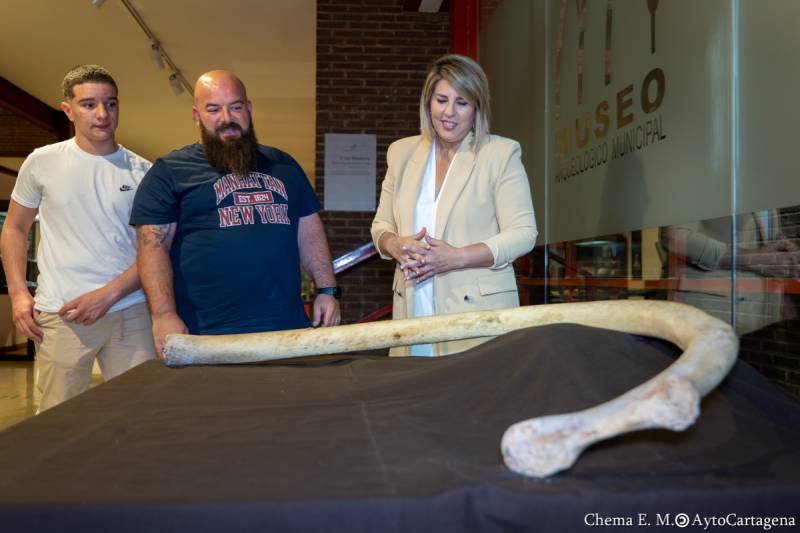 A fascinating find in Cartagena has unveiled a complete rib of a southern mammoth (Mammuthus meridionalis) inside the Cueva Victoria cave. This major discovery, shared by the Cartagena city council, is considered the largest fossil unearthed at the site to date.
A fascinating find in Cartagena has unveiled a complete rib of a southern mammoth (Mammuthus meridionalis) inside the Cueva Victoria cave. This major discovery, shared by the Cartagena city council, is considered the largest fossil unearthed at the site to date.The rib, measuring 2.2 metres long, is exceptionally well-preserved. Initial analyses suggest it belonged to an adult mammoth that stood around 4.2 metres tall and weighed close to 9 tonnes. Until now, only dental remains of mammoths had been found in Cueva Victoria, making this find a valuable addition to our understanding of size of these ancient creatures. It also prompts a re-evaluation of the cave's historical use, traditionally thought to have been a hyena den.
During the presentation of the bone, Cartagena Mayor Noelia Arroyo remarked, "Each discovery makes the picture of Cartagena a million years ago clearer and more defined: a place inhabited by sabre-toothed tigers, hyenas, giant apes and animals as large as these mammoths." She emphasised that such animals could only have thrived in an environment abundant with freshwater and dense vegetation.
The event was attended by Councillor for Heritage Pablo Braquehais, members of the Municipal Corporation, Archaeological Museum Director Miguel Martín, and Cueva Victoria researcher Andrés Ros. Ros emphasised just how important this discovery is, coinciding with the 50th anniversary of the work that started at the palaeontological site.
Roque Berruezo shared how his father discovered the rib during mining activities, noting that it has since become part of their family history. "A piece of our family's heart remains in the museum," he expressed.
The mammoth rib has been added to the Municipal Archaeological Museum's collection and will be on display for a month before undergoing further study by specialists. It will later become part of the museum's exhibits alongside other remains from Cueva Victoria, such as mammoth teeth and a phalanx (finger bones) that may have been human. This discovery also strengthens prior suggestions that early humans may have migrated through the Gibraltar land bridge into Europe much earlier than previously believed.
Looking ahead, the City Council plans to finalise an agreement with the Catalan Institute of Human Paleoecology and Social Evolution (IPHES) to resume excavations at Cueva Victoria. The new campaign, set to begin in September, will involve a diverse team of researchers.
Additionally, this summer will see the return of open days at Cueva Victoria, offering the public an opportunity to visit one of the western Mediterranean's most important prehistoric sites. The site attracted over 3,000 visitors during a previous season back in 2022, when Cartagena reopened access for the first time after years of being closed.
Cueva Victoria is home to over 100 species of vertebrates from the Lower Pleistocene, many of which have an African origin. This makes it a key site for studying how creatures migrated between continents. The cave itself has over three kilometres of galleries and is recognised as a Site of International Geological Interest.
It also forms part of Cartagena's mining history, having been exploited between 1878 and 1952. Today, you can check out these remains at the Enrique Escudero de Castro Archaeological Museum, where you can dive deeper into the area's fascinating history.
Image: Ayuntamiento de Cartagena
Loading
Sign up for the Spanish News Today Editors Roundup Weekly Bulletin and get an email with all the week’s news straight to your inbox
Special offer: Subscribe now for 25% off (36.95 euros for 48 Bulletins)
OR
you can sign up to our FREE weekly roundup!
Read some of our recent bulletins:
Discount Special Offer subscription:
36.95€ for 48 Editor’s Weekly News Roundup bulletins!
Please CLICK THE BUTTON to subscribe.
(List price 3 months 12 Bulletins)
Read more stories from around Spain:
Contact Murcia Today: Editorial 000 000 000 /
Office 000 000 000












